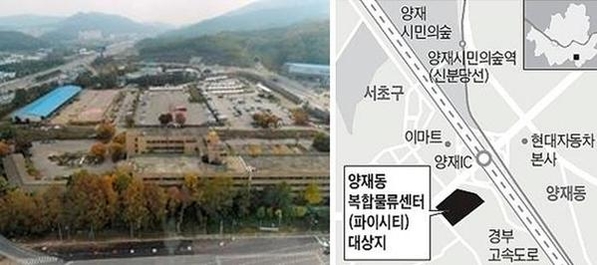Input 2021.02.05 16:51

Seocho-gu said the day before,’The elaborate tower created by Seocho-gu and Seoul city! It refuted the contents pointed out through the press release of’Seoul, which collapsed before the conclusion’. Through this data, Seocho-gu said, “The city unilaterally changed the Yangjae housing site district unit plan reorganization plan, ignoring all the drafting procedures in progress in the district,” he said, “an excessive use of discretion.”
The proposed amendment announced by the city to be viewed includes the contents that 14 distribution facilities (41,5324m2), including the Harim site, will be designated as special planned areas and the allowable floor area ratio will be limited to 400%.
Seocho-gu said that it is not effective because only a plan for a distribution business facility site of about 400,000 ㎡ out of the total 3 million ㎡ district unit plan area in the city is ineffective, and there is a high concern that a poor district unit plan will be established as the traffic impact assessment deliberation has not been conducted. Revealed.
Regarding this, the Seoul Metropolitan Government said, “LG, KT research facilities, and Korea Freight Terminal, etc., are the core spaces of the R&D (R&D) innovation district,” and “It is necessary to preemptively respond to large-scale site development.” “In consideration of these conditions, although Seocho-gu has urged to quickly implement the procedure for reorganizing district unit plans undertaken in Seocho-gu, Seocho-gu continues to delay the procedure for more than two years by continuing unreasonable demands such as easing the residential area ratio in Yangjae 2-dong.” “The delay in the drafting process in Seocho-gu is an act of abusing the drafting authority delegated to the autonomous district through the Seoul City Ordinance.”
Regarding the floor area ratio, which is the most controversial issue of this site, the Seoul Metropolitan Government said, “A place that has been consistently managed with an allowable floor area ratio of 400% or less for more than 15 years,” and said, “If the largest development plan (floor area ratio 800%) is established on the site, traffic congestion increases. It’s as obvious as seeing fire,” he said. He said, “The floor area ratio standard of 400% or less is applied to other large-scale sites under the same conditions.”
Regarding the fact that the site was selected as a demonstration complex for an urban high-tech logistics complex by the Ministry of Land, Infrastructure and Transport, which can receive a floor area ratio of up to 800%, the Seoul Metropolitan Government said, “At the time when the Ministry of Land, Infrastructure and Transport reflected the selection of a pilot complex,’the promotion of individual projects is the change in local conditions. It stated that the decision was made in consideration of the like,” he said. “Seocho-gu’s claim that the national plan was ignored is a distorted fact.”
Previously, Seocho-gu said, “The Korea Cargo Terminal site was selected as a demonstration complex of an urban high-tech logistics complex (floor area ratio of 800% or less) in 2016, and was reflected in the 2nd Comprehensive Development Plan for Logistics Facilities, the national plan.” “Limiting is ignoring state and higher plans.”
